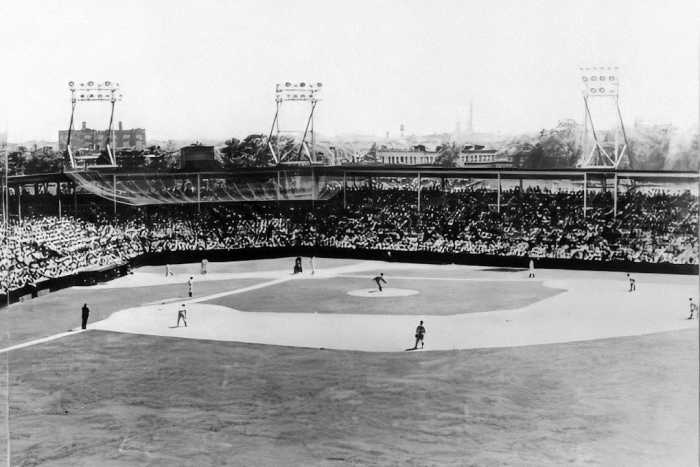BY LINCOLN ANDERSON | P.S. 41 is spearheading an effort to expand the planned West Village slow zone, so that it will include the W. 11th St. public school, along with nearly 10 other schools and school- or senior-related programs.
The city’s Department of Transportation plans to implement the slow zone in 2015. According to D.O.T., “The slow zone program, in short, takes a well-defined, relatively compact area, and reduces its speed limit from 30 miles per hour [the standard throughout the city] to 20 miles per hour, with further reductions to 15 miles per hour near schools. These newly reduced speed limits are then promoted and enforced through the use of traffic-calming measures, such as specialized signage at zone entry points, painted speed limit information on streets and the selective use of speed humps (relatively flat, elongated speed bumps that are designed to be traversed at 15 to 20 miles per hour).”
Currently, the proposed West Village slow zone’s boundaries are Hudson St. on the west, W. 11th St. on the north, Seventh Ave. South on the east, and W. Houston St. on the south. Included in the city’s proposed zone are P.S. 3, Greenwich House Music School and City as School High School, among others, plus J.J. Walker ball field and the Hudson Park Library.
However, P.S. 41 — known as the Greenwich Village School — is advocating for this slow zone to be extended to Sixth Ave., which would include its own school, plus the Joffrey Ballet School; Village Preschool Center; Academy of St. Joseph; Greenwich House Nursery School and Senior Center; Greenwich House Pottery; Our Lady of Pompeii School; the Downing St. Preschool; Little Red School House, and a Kumon tutoring branch.
P.S. 41 Principal Kelly Shannon presented the proposal for an expanded slow zone at Community Board 2’s Traffic and Transportation Committee meeting last Thursday evening.
Pointing to the need for the larger zone, she said, “Just this past fall, I witnessed a cab hit a child and caregiver on W. 11th St. just off of Sixth Ave., right in front of our school’s entrance.”
Shannon sent out a letter in February to elected officials, school advocates and D.O.T., making the argument for enlarging the zone.

“A simple solution would be to extend the zone one block east on 11th St. and use Sixth Ave. instead of Seventh Ave. South as the zone’s eastern corridor,” she stated in her letter. “As such, a West Village zone extended to include P.S. 41 would still be smaller than most existing slow zones. D.O.T. engineers and C.B. 2 would need to properly review all options in detail, but it appears this suggested suggestion to include P.S. 41 would create a zone of about .2 square miles — still only half the area of the East Village’s .4-square-mile slow zone.”
The East Village slow zone is set to be rolled out very soon, this August, in fact, according to Chad Marlow, of Community Board 3, who was one of its biggest advocates. Its boundaries are E. Second St. on the south, First Ave. on the west, E. 14th St. on the north, and to the western edge of the F.D.R. Drive on the east.
In addition, Shannon and P.S. 41 are calling for the majority of the intersections within the zone along the Sixth Ave. and Seventh Ave. South to be made even safer by making them so-called “complete streets.” These improvements would include shortening pedestrian crossing distances and adding better street markings to “clarify who belongs where.”
As of last week, Shannon and P.S. 41 had collected more than 330 petition signatures in support of the effort. The signatures were gathered “on four chilly mornings on 11th St., outside P.S. 41, in early April 2014,” stated the information packet the principal presented at last week’s committee meeting.
Heather Campbell, a P.S. 41 parent, said, “I’m very excited that C.B. 2 and D.O.T. are focusing on how to make this area safer. As you can see from the map, extending the slow zone to Sixth Ave. creates a safety buffer for a huge number of child- and senior-focused entities. It is a big and important step for safer streets. And after the slow zone conversation, we’re hoping the next part that will get on another agenda is complete streets for the area, including Sixth Ave. and Seventh Ave. South.”
During the board members’ discussion of the proposal, committee chairperson Shirley Secunda said of P.S. 41, and the other additional schools, “they meet the criteria” for being included in a slow zone.”
However, Tom Connor added skeptically of the traffic-slowing strategy, “I don’t think it will really work till they have it everywhere.”
In the end, the committee voted in favor of the zone’s expansion, with seven members and one public member voting “yes” versus one “no” vote and one abstention.
While not guaranteeing the outcome, Colleen Chattergoon, the D.O.T. community representative for C.B. 2, said the agency would look at the possibility of expanding the zone.



































